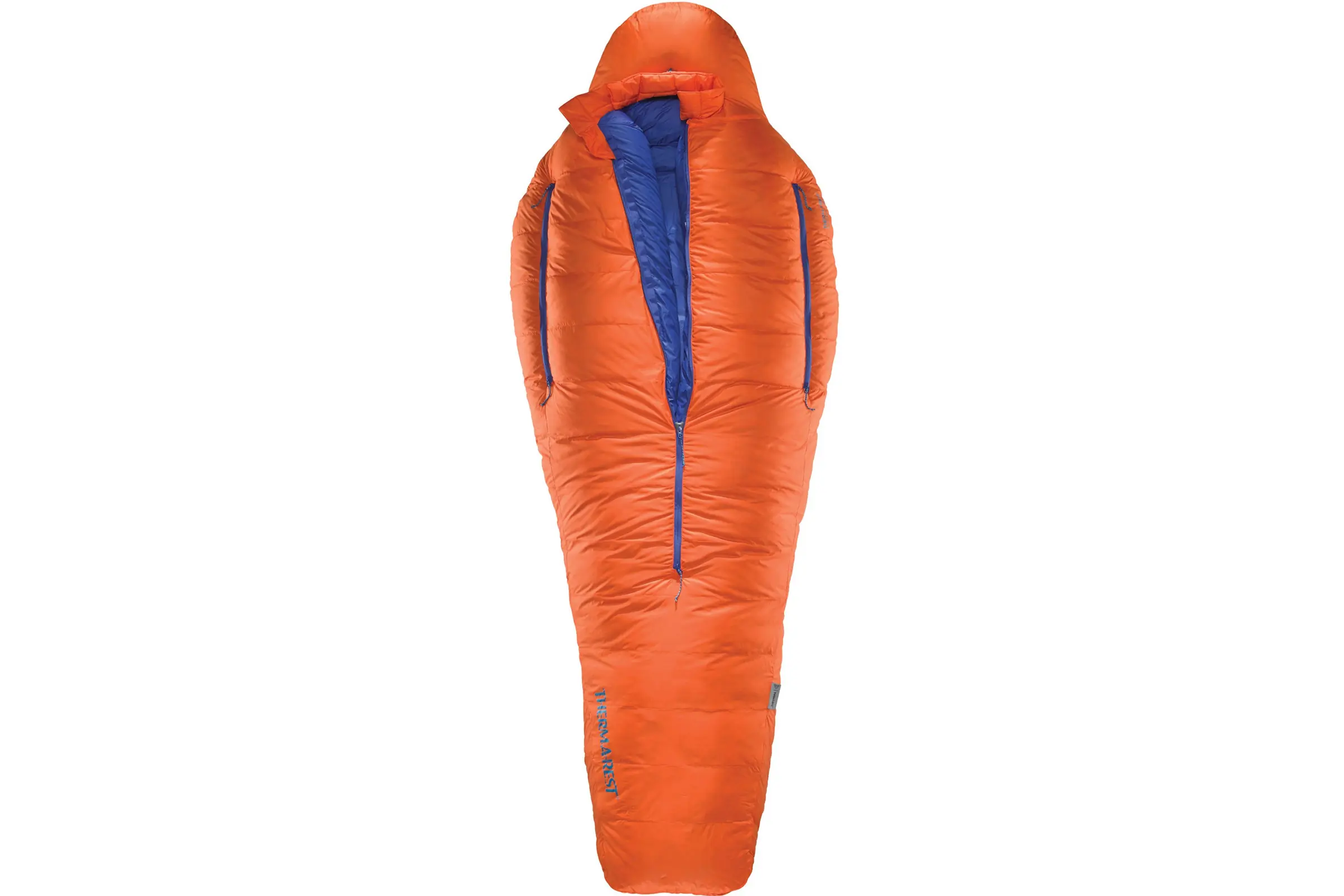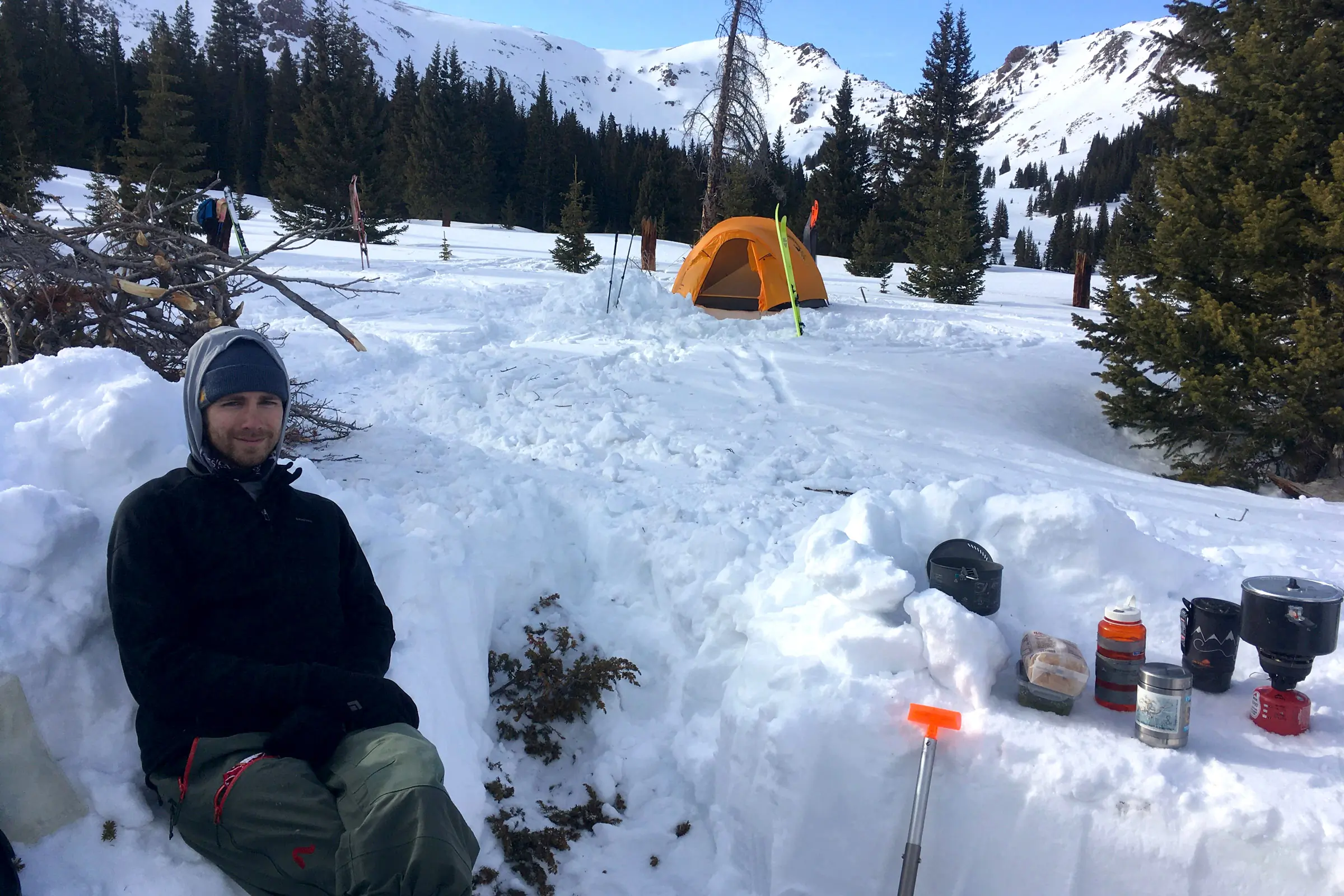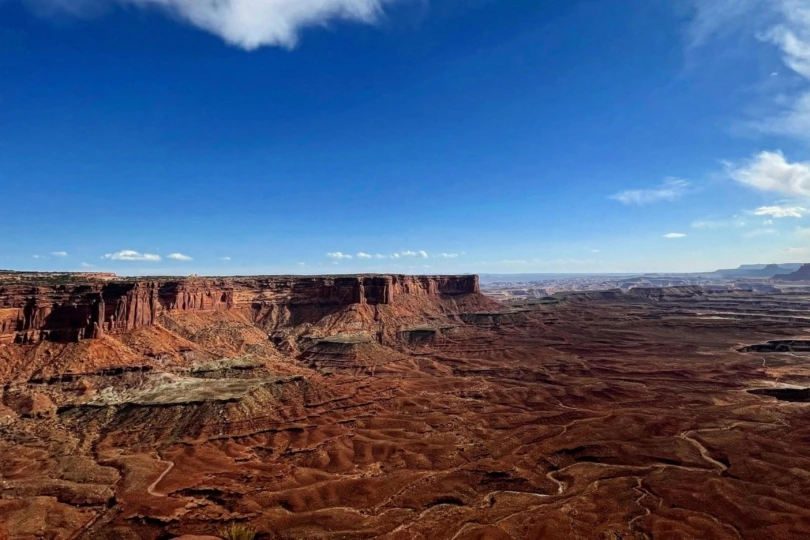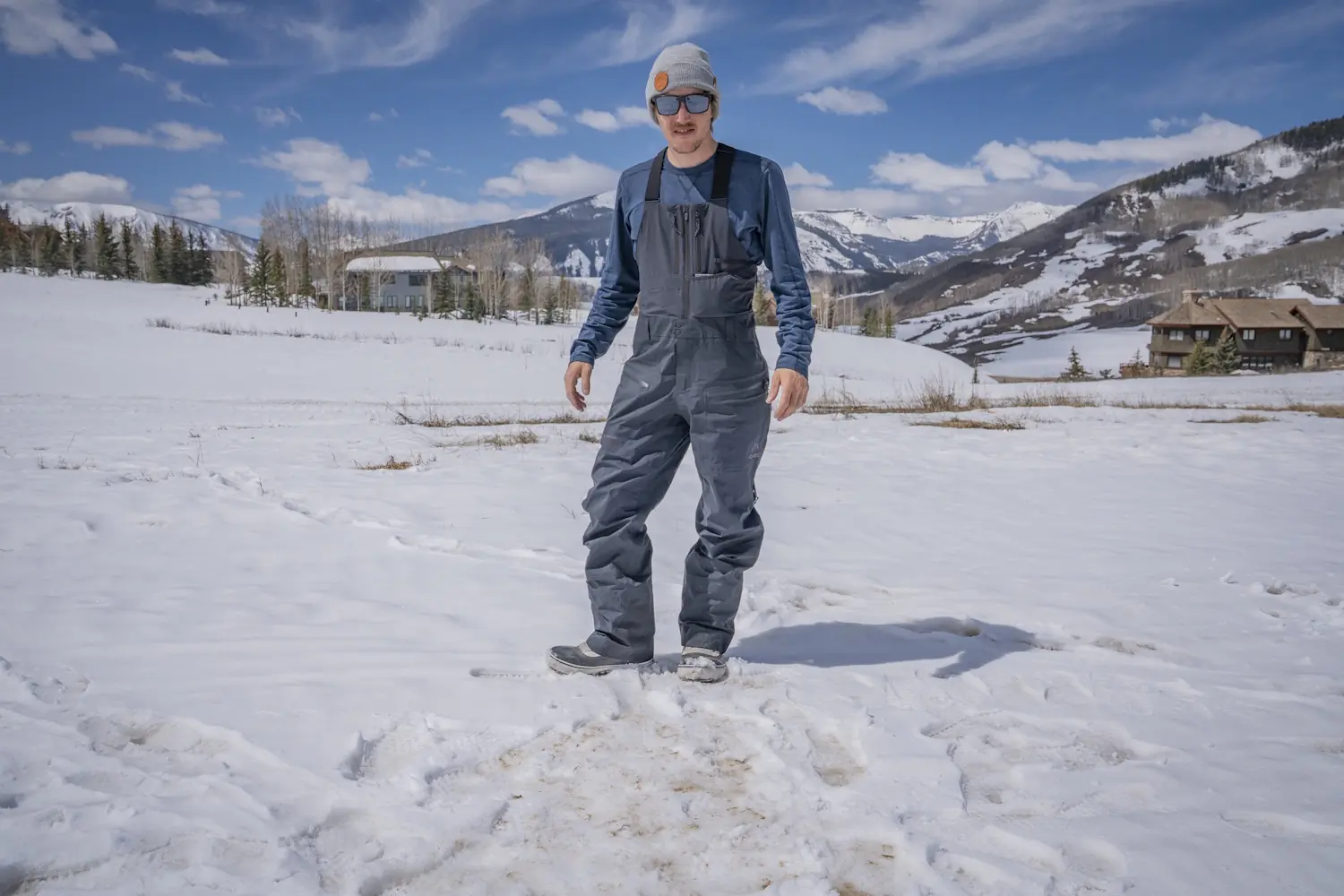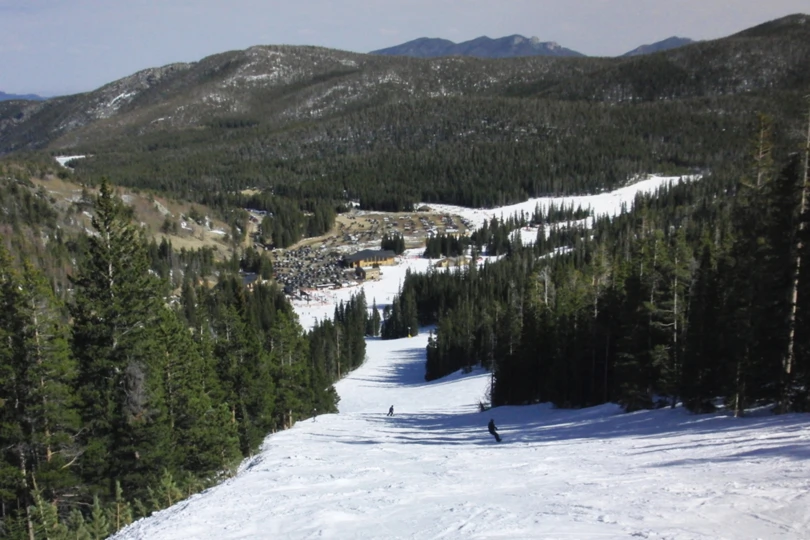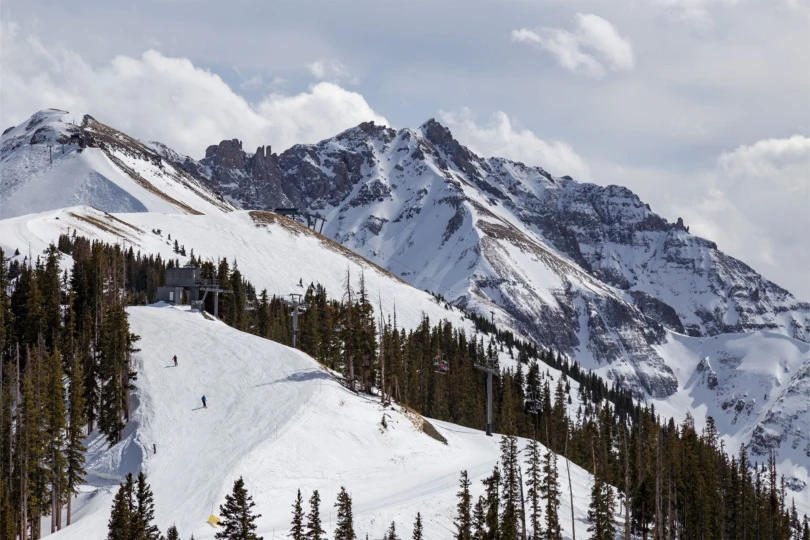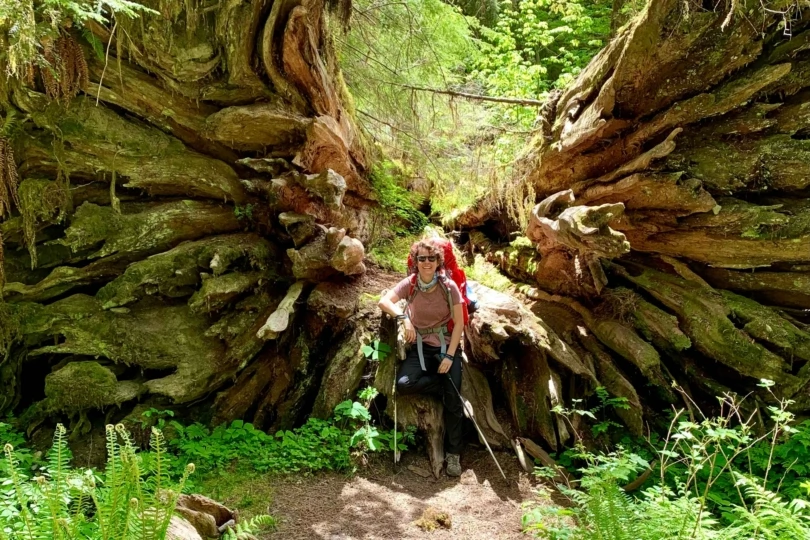After a long day of winter trekking, there’s nothing quite like diving deep into your sleeping bag. Even with layers on and a stove blazing, the best feeling comes from nestling into a warm, puffy cocoon.
However, winter bags designed for deep cold are bulky and can weigh 5 pounds — or more. That’s why I was intrigued when I discovered the surprisingly lightweight and streamlined Therm-a-Rest Polar Ranger, developed in collaboration with renowned polar guide Eric Larsen. Eager to put it to the test, I took it on a winter ski tour in the Norwegian Arctic.
In short: The Therm-a-Rest Polar Ranger ($790) is spot-on with the temperature rating, ensuring you stay warm even on cold nights. Packed with handy features like a baffled pocket in the footbox for warm toes and convenient side zips for ventilation, it’s designed very well for winter travel. However, its snug overall fit and restrictive hood and snorkel might not suit everyone, making it best suited for back sleepers. And, then there’s also the price.
- Shell: Recycled nylon ripstop with DWR finish
- Insulation: 800-fill Nikwax Hydrophobic Down
- Size Regular: Fits users up to 6 'tall
- Size Long: Fits users up to 6' 6" tall
- Packed Regular: 8.5" x 10" (22 x 25 cm)
- Packed Long: 8.5" x 10" (22 x 25 cm)
- Weight Regular: 3 lbs., 4 oz.
- Weight Long: 3 lbs., 7 oz.
- Price: Regular $850 | Long $880
Pros
- Lightweight and relatively compact
- Hydrophic down filling maintains insulation even when wet
- Good warmth-to-weight ratio
- Foot warming toebox
- Attachment points to keep sleeping(s) pad in place
Cons
- The fit is a little too snug
- Hood and snorkel are quite restrictive
- The phone pocket is small
- Compression sack is not wide enough
Therm-a-Rest Polar Ranger Sleeping Bag Review
Key Specs and Features
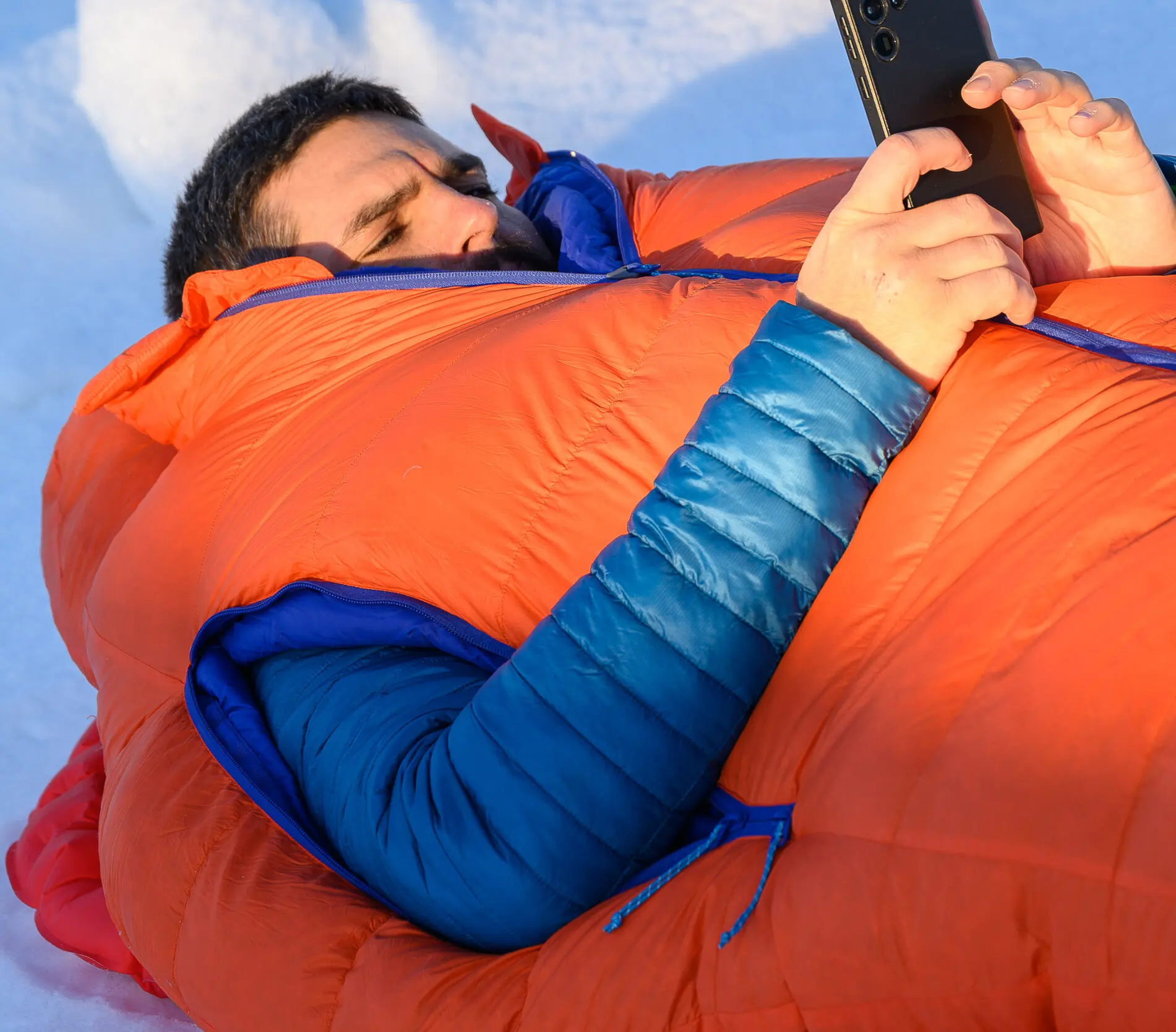
The Therm-a-Rest Polar Ranger Sleeping Bag boasts impressive technical specifications. With a comfort rating of -20 degrees F (-29 degrees C) and filled with 800-fill Nikwax Hydrophobic Down insulation, this sleeping bag is designed to keep you warm in deep cold.
Available in regular and long sizes, it features a 20D nylon ripstop shell with a DWR (durable water-repellent) finish for added durability and resistance to moisture.
Now there are other winter bags that weigh 3-4 pounds with comparable (or more extreme) temperature ratings, such as the Sea to Summit Alpine Down, the Mountain Hardwear Phantom, or the Mountain Equipment Redline (wildly more expensive). But none of these bags come with hydrophobic down fill, side ventilation zips, a baffled pocket in the toebox, or a snorkel and integrated draft collar.
The Therm-a-Rest Polar Ranger has a ton to offer when it comes to sleeping comfortably in the cold.
Real-World Testing in the Norwegian Arctic




Venturing into the remote mountains of northern Norway in February, I embarked on a week-long ski tour to put the Polar Ranger to the test. Accompanied by a friend equipped with the same sleeping bag, we adopted a polar expedition style, hauling all our essentials on skis and pulling a small sled.
However, the weather had more in store for us than anticipated. Despite expecting temperatures between 5 and 14 degrees, we endured sub-zero conditions throughout the entire week, hitting below -20 degrees in the final days. These cold conditions provided the perfect opportunity to challenge the capabilities of the Therm-a-Rest Polar Ranger.
Impressive Moisture Management
While the Therm-a-Rest Polar Ranger Sleeping Bag has some drawbacks, it has numerous strengths. Treated down ensures insulation performance even in damp conditions, so I didn’t see the need for a vapor barrier liner for such a short trip.
As moisture gathered and froze on the bag’s surface, the hydrophobic down performed admirably, maintaining warmth even when heavily iced over (again, I tested in the Arctic). I’d love to know how this holds up over time. (And if you are gone for a several-week-long expedition, maybe consider a vapor barrier.)
The bag’s central zipper boasts an anti-snag design, delivering a seamless experience. Exiting the bag is a breeze — simply push your arm out of the hood and downward, and it effortlessly opens. This stands in stark contrast to my previous encounters with other winter bags. Even other bags with side-opening zips always seem to snag for me.




The Therm-a-Rest Polar Ranger stands out for its lightweight design, catering perfectly to winter adventurers seeking warmth without the burden of excess weight. While I needed to layer up some days, I found the temperature rating was spot-on. Even when pushing beyond its extreme limit, I remained chilly but just about comfortable enough.
A standout feature for me was the toebox, fortified with a baffled pocket of insulation. This innovative addition proved highly effective in keeping my feet toasty — a feature I’d love to see in more winter (negative and below-zero) bags.
Cons: Warm, but Snug
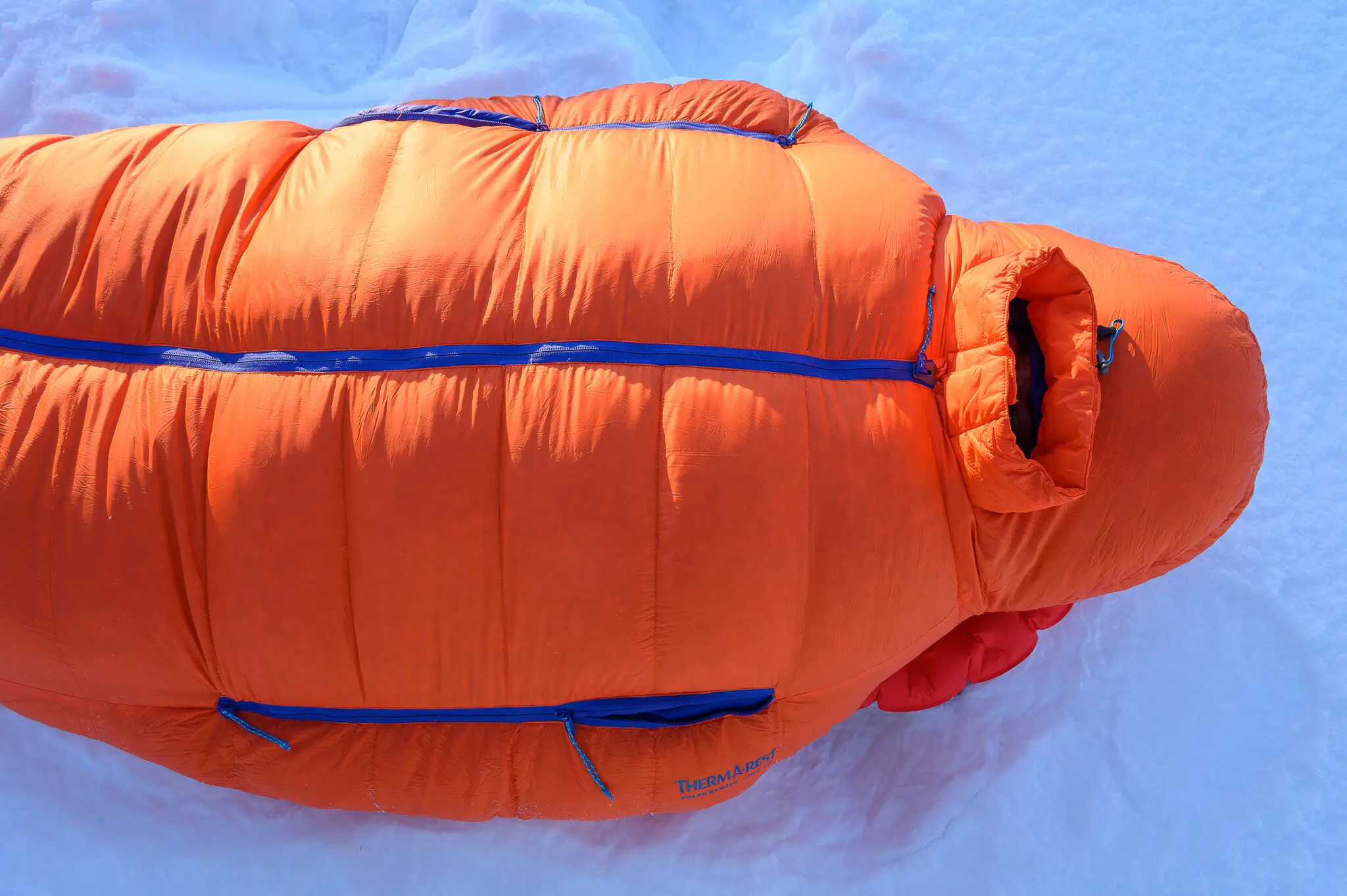



During our first night out, I quickly realized that my regular-size bag was a tad snug, and I was a little chilly with just base layers on. I opted for a light fleece hoodie and pants combo after that, with gloves and a hat on colder nights. Luckily, the side zips provided instant ventilation when I overheated, and the clever draft “tubes” kept me from getting too cold. It’s a smart feature that more winter bags should adopt.
However, there’s a key catch with this bag. To fully benefit from its warmth, you must zip up tight and cinch the hood — a bit claustrophobic, even for seasoned winter campers. Despite being sent the regular size (I’m just under 6 feet tall), Therm-a-Rest’s “performance” fit felt restrictive. While the length was fine, I had to wriggle down to pull the hood over my head.
The bag’s narrow width made it tricky to move around. As such, it definitely wouldn’t be suited for side sleepers. I’m not sure the long version would help much, as it only adds a few extra inches on each side of the shoulder.
The snug fit also made it challenging to layer up clothing, although ideally, you shouldn’t need to supplement your bag with extra layers. I only resorted to this on the coldest nights when temperatures dipped below -22 Fahrenheit.
Verdict on the Scuba Hood




The hood covered most of my face, leaving only my mouth and nose exposed. Meaning, it was essential for me to sleep on my back to prevent breathing into the bag and icing up the hood. Although the snorkel, fitted with synthetic insulation, helped manage moisture, it still iced up after a few days. I didn’t fully close it with the built-in magnets to leave a little more room around my face.
The small phone pocket proved fine for a headlamp, but tight for my iPhone 13 Pro, potentially posing a challenge for those with larger smartphones. Additionally, the stuff sack’s slim design results in a notably elongated shape when packed down. The stuffsack could be a little wider for easier packing, too.
Therm-a-Rest Polar Ranger: Conclusion
Despite a few drawbacks, the Therm-a-Rest Polar Ranger Sleeping Bag’s impressive warmth-to-weight ratio positions it as a strong choice for cold-weather camping adventures — whether you’re ski touring, sledding, or winter backpacking. If the slightly narrow bag fits you comfortably, that is.
Next time, I might opt to save it for later in the season so I can enjoy more room by opening the zips. But overall, its lightweight and moisture-resistant insulation, as well as features like the scuba hood and insulated footbox, means I will definitely be using it again.

